Main menu
Common skin conditions

NEWS
Join DermNet PRO
Read more
Quick links
Author: Amy Dendale, Medical Student, University of Auckland, New Zealand. DermNet Editor in Chief: A/Prof Amanda Oakley, Dermatologist, Hamilton, New Zealand. December 2016.
Introduction Demographics Causes Clinical features Complications Diagnosis Treatment Outcome
A stasis ulcer is the most common cause of chronic full-thickness skin loss on the lower leg. As the name implies venous blood doesn’t flow properly from the leg back towards the heart. A stasis ulcer is also called venous leg ulcer, gravitational ulcer and varicose ulcer (although the latter is an inappropriate name when varicose veins are not present).
Stasis ulcers affect 1% of the population, so they are not uncommon. A variety of medical problems and lifestyle factors have been linked to their development. These include:
Stasis ulcers account for at least 40–50% of chronic lower limb ulcers and contribute to a further 20% of mixed arterial and venous ulcers.
Stasis ulcers are caused by:
Factors leading to venous insufficiency include:
When blood is unable to be efficiently returned to the heart:
The result is an eventual skin breakdown, especially after an acute injury (which might be quite minor).
Characteristics of stasis ulcers include:
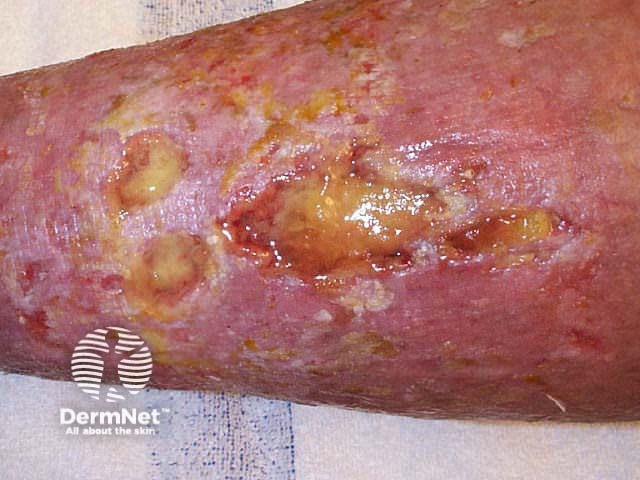
Venous leg ulcer
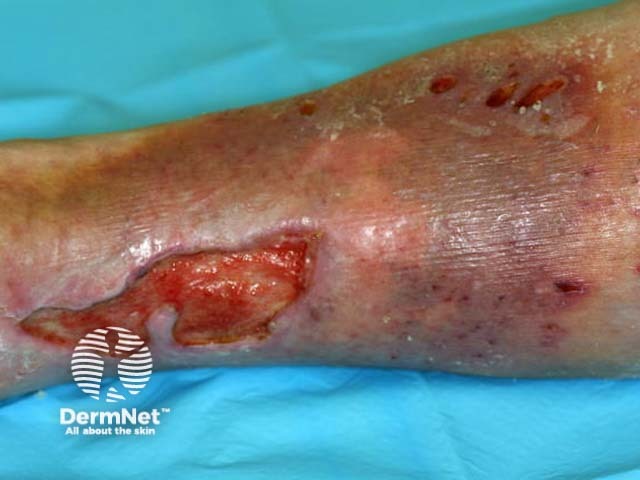
Venous leg ulcer
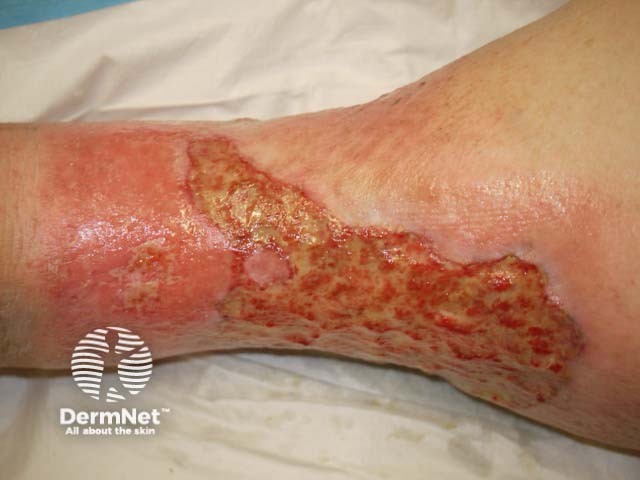
Venous leg ulcer
Accompanying features confirming venous disease include:
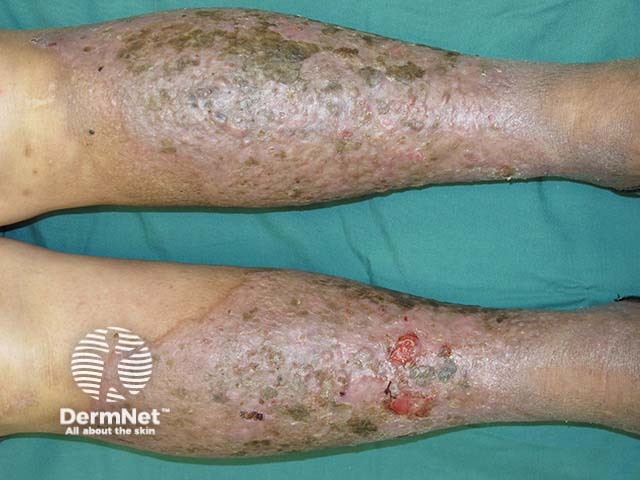
Venous dermatitis and ulceration

Lipodermatosclerosis
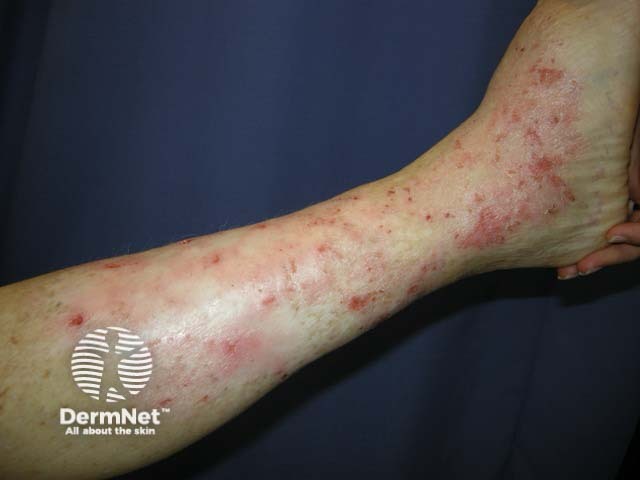
Venous eczema
The main complication of stasis ulcers is an infection. Wound infection can further impair the healing process. Bacteria colonise nearly all leg ulcers, but systemic antibiotics are not required unless clinical signs of infection are present. Signs that a stasis ulcer may require treatment with antibiotics include:
Topical antibiotics are not recommended because they slow the rate of wound healing, despite their bactericidal properties.
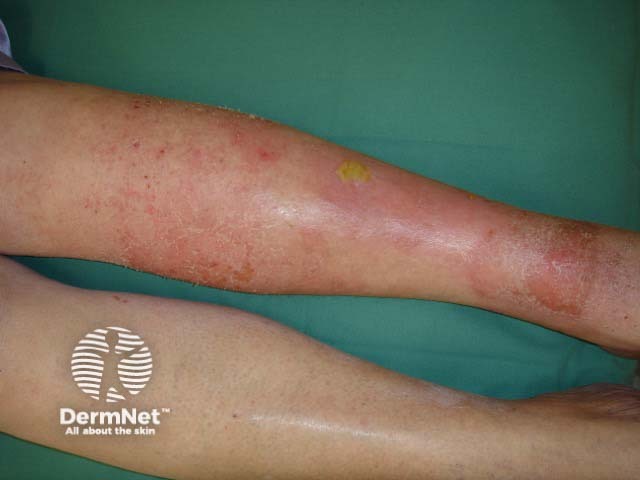
Infected venous ulcer
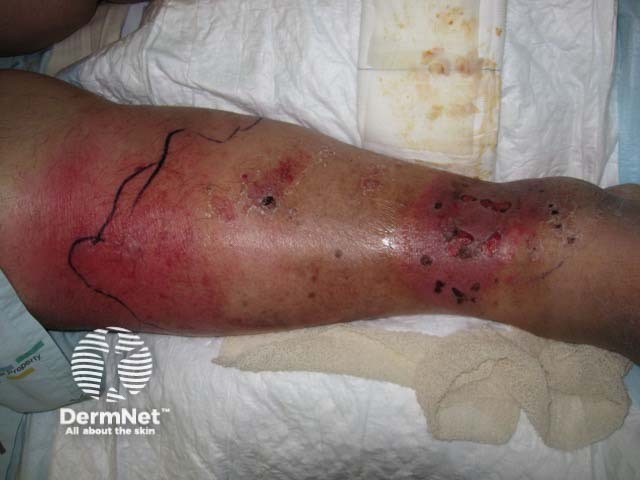
Cellulitis around venous ulcer
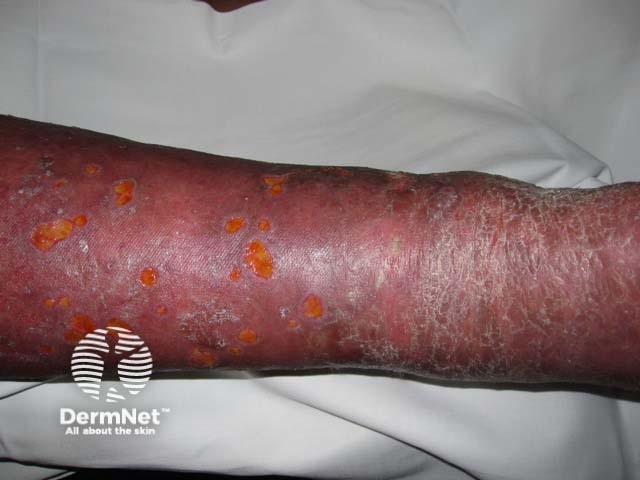
Cellulitis and venous insufficiency
Stasis ulceration is usually a clinical diagnosis, made on the basis of the patient's history and examination findings, and includes the presence of risk factors for venous stasis, that is, congestion and slowing of venous circulation, and the characteristic features of the wound and surrounding tissues.
Other investigations to evaluate venous insufficiency and provide haemodynamic information may include:
The treatment for stasis ulcers aims to address the underlying cause, provide symptomatic relief, and promote wound healing.
Compression is a mainstay of treatment for stasis ulcers.
Adequate wound care involves keeping the wound clean and moist with regular dressing changes.
Oral medications that affect blood flow, particularly aspirin, provide some benefit in promoting the healing of stasis ulcers.
Surgical interventions may help stasis leg ulcers heal and prevent their recurrence.
In the case of a resistant stasis ulcer, other therapies may be tried, including:
Stasis leg ulcers are chronic and may persist for a few months to many years. Once they have healed, there is a high likelihood that stasis ulceration will recur, unless the underlying venous insufficiency is effectively treated.